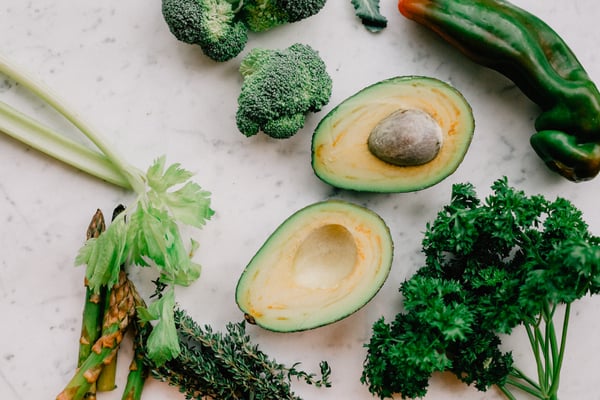Not all that long ago, the thought of going vegetarian was outlandish to most. Meat was considered to be a mealtime staple, something all meals were built around. Meat-free diets were believed to be bland and boring. Today, more and more people are realizing that this just isn't true. While meat is still an important part of many people's diets, the number of people eating less meat is increasing. People are finding that meat-free meals can actually be quite flavorful and delicious. Not only that, but studies are showing that there are health benefits associated with a reduced consumption of meat. Whether you want to eat less meat for the health benefits or you want to move towards more compassionate eating, here are a few tips that can help you ease into more meatless eating.
Know Why You're Eating Less Meat
Think about why you want to move toward meatless eating. Maybe you want to do it for the health benefits. Perhaps you want to shift to more compassionate eating for the animals. Or, perhaps you're thinking about the environmental benefits of reducing your meat consumption. Knowing and understanding your reasoning behind wanting to eat less meat can help keep you focused.
Reduce Your Portion Size
Typically, meals are built around meat. It's the star of the dish, and everything else you consume revolves around it. Instead of making meat the main focus, make it a supporting side. Reduce your portion size and add more grains, beans, legumes, and vegetables to help fill you up and provide you with important nutrients. If you don't particularly want to give up meat completely, this can be a great way to ease into more meatless eating. Over time, you'll get used to eating less—and you likely won't even miss it.
Cut Meat Once a Week
Giving up meat cold turkey can be difficult for many people. To ease into meatless eating, try eliminating meat once a week. The Meatless Monday movement started as a global effort to encourage people to give up meat just one day a week. Giving up meat completely can be hard. Only doing it once a week to start with, on the other hand, is much more manageable. As you get used to eating less meat, you can consider adding more meatless days to your week—or even try going meatless for a full month.

Replace What You Remove
When you remove meat from your plate, you need to replace it with something else. Simply removing meat could leave you feeling hungry, tired, and irritable, which could cause you to give up on your goals. For instance, instead of having meatloaf with beef, try making a loaf using lentils and walnuts, chickpeas, or beans. You get a very similar taste and texture, and you'll still get plenty of protein and other vital nutrients.
Select the Vegetarian Option
Many restaurants and catering services are now offering dietary alternatives, expanding the number of people they can serve. You can find vegetarian, vegan, and other options on many menus all across the country. At Sifted, we always offer meatless protein alternatives for our clients, allowing everyone to enjoy a delicious, healthy, performance-boosting lunch at work. When presented with the choice between a meat-based or veggie-based meal, choose the vegetarian option.

Seek Out New Recipes
If you've been making the same recipes for a while, removing the meat from your diet can leave you a bit at a loss of what to do. If you don't know what to cook or how to cook alternative proteins, it's easy to give up and go back to what you know. Fortunately, there are plenty of resources available. Take a look online. Simply by typing in “vegetarian meals,” you'll be presented with pages of results providing countless recipes to choose from. You can also look for recipes that can help you turn your favorite meat-based recipes vegetarian. There are several vegetarian and vegan cooking and baking blogs out there that provide not only recipes but also tips, tricks, and relatable stories. If you prefer cookbooks, there are also plenty that cover vegetarian and vegan options. Head to your local bookstore and pick a few to add to your other cookbooks at home. Trying new recipes gives you a great opportunity to not only try new protein sources but new cuisines as well. Don't be afraid to experiment. You might be surprised at just how much you expand your palate.
Make Sure You're Eating Enough
Meat is high in calories. Many plant foods, on the other hand, contain significantly less. When moving toward meatless eating, it can be easy to fall into the trap of not consuming enough calories, which can lead to fatigue, mental fog, and more. You need to make sure that you're eating enough. 100 calories of broccoli looks very different than 100 calories of chicken or beef. Incorporate calorie-dense plant foods like nuts, seeds, legumes, and sweet potatoes. You can also use an app to track what you eat to ensure that you are getting enough to eat, as well as meeting all of your nutritional needs.
Stay Hydrated
It's vital that everyone drinks plenty of water every day. It's especially important for those trying to eat less meat. Plant foods have a lot of fiber. While fiber is a vital nutrient, too much can lead to issues like gas, bloating, and general discomfort. You need to make sure that you're drinking enough water so that the fiber can more easily move through your digestive tract.
Go Easy on Yourself
Making the transition to meatless eating isn't always easy. You have been eating a certain way for so long that you've gotten used to it. As you start to reduce your meat intake, you may find that you have cravings that are hard to ignore. You might give in and slip up. If you do slip up, go easy on yourself. Don't look at it as a failing. Instead, take it as a learning opportunity. Ask yourself what caused you to slip back into old habits. Understanding what happened can help you to learn and improve. When you're ready, you can try again! Eating less meat doesn't mean that you have to make sacrifices. Meatless eating can be exciting and delicious, opening up a whole new world of dining possibilities. Following these tips can help make the transition easier.

